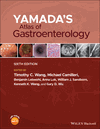Obesity: treatment and complications
Summary
This chapter offers diverse images that provide an overview of obesity and aims to provide a synopsis through pictures and illustrations rather than through text. Multiple etiological factors have been associated with obesity which can be classified as individual and environmental. The regulation of energy balance is tightly regulated by the brain—gut—liver—adipose tissue axis. Obesity is a major risk factor for gastrointestinal and liver disease. The treatment of obesity is a continuum of care with four main phases: obesity assessment, intense weight loss, weight loss maintenance, and prevention of weight regain. Endoscopic bariatric therapies are minimally invasive procedures for weight loss. Gastroenterologists are often confronted with complications indirectly related to the surgery, such as anastomotic ulceration, band erosion, stricture, and fistulas, which may require endoscopic therapy.



